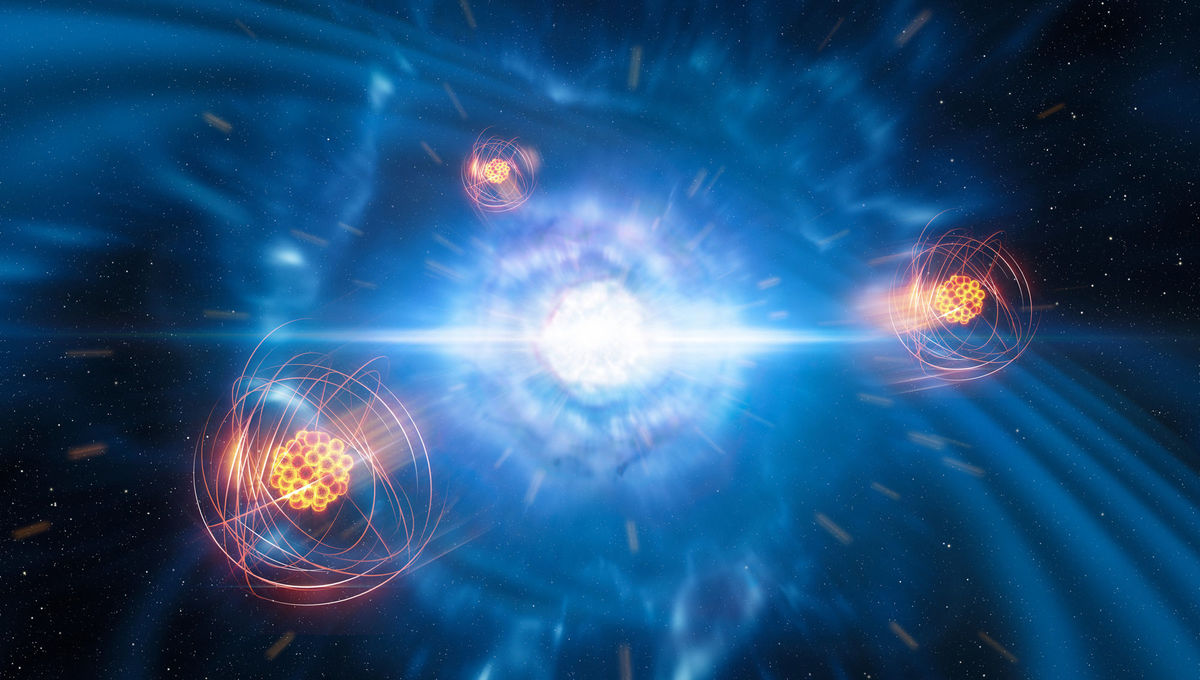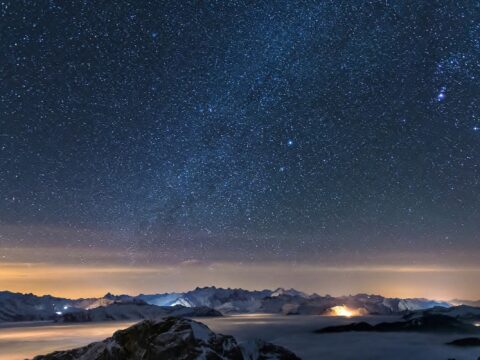
One of the most remarkable scientific findings of the twentieth century is the delicate fine-tuning of the laws that govern the universe, which enable the emergence and sustenance of intelligent life. Like the scientific confirmation of the beginning of the universe, fine-tuning poses a significant challenge to naturalism.
Scientists have been struck by how precisely the laws of physics seem to be calibrated for life. “There are many such examples of the universe’s life-friendly properties,” says science and nature writer Tim Folger in Discover magazine, “so many, in fact, that physicists can’t dismiss them all as mere accidents” (Folger, SAIC). British astronomer Fred Hoyle remarked, “A commonsense interpretation of the facts suggests that a super intellect has monkeyed with physics, as well as chemistry and biology, and that there are no blind forces worth speaking about in nature.” (Hoyle, quoted in Davies, AU, 118)
Let’s consider an example.
Rare Conditions on Earth
Recent scientific discoveries confirm that Earth has extremely rare conditions that allow it to support life. The vast majority of the universe is uninhabitable. Let’s briefly consider a few:
- Life must be in the right type of galaxy. Of the three types of galaxies, only spiral galaxies with the right mass (like the Milky Way) can support life.
- Life must be in the right location in the galaxy. We are situated in just the right place in the Milky Way to avoid harmful radiation.
- Life must have the right type of star. While most stars are too large, too luminous, or too unstable to support life, our sun is just the right size and age. There is a window of time in which a sun can support complex life. It can’t be too young or too old.
- Life must have the right relationship to its host star. If Earth were slightly closer to or farther from the sun, water would either freeze or evaporate, rendering Earth uninhabitable for complex life.
- Life needs surrounding planets for protection. A habitable planet must have large surrounding bodies such as Jupiter and Saturn. The early motions of Jupiter and Saturn removed most of the asteroids and comets from the solar system with two beneficial effects. First, the removal process also caused many collisions early in Earth’s history. These collisions added water, ammonia and other life-essential materials to Earth. Second, the loss of comets and asteroids reduced the subsequent rate of impacts on Earth by a factor of one thousand. (Grazer, “Jupiter,” 23–38)
- Life requires the right type of moon. If Earth did not have a moon of the right size and distance, it would be uninhabitable. The moon stabilizes the earth’s tilt, preventing extreme temperatures and thus creating a stable, life-friendly environment. (Gonzalez and Richards, PP, 23)
What happens when we try to assign a probability to the fine-tuning of all the known constants of nature? Theoretical physicist Lee Smolin calculates a much smaller number: the probability of a universe where stars exist. “Perhaps before going further we should ask just how probable is it that a universe created by randomly choosing the parameters will contain stars. Given what we have already said, it is simple to estimate this probability. For readers who are interested, the arithmetic is in the notes. The answer, in round numbers, comes to about one chance in 10229.” (Smolin, LC, 45) Stated another way, if every proton in the universe represented a universe with different laws of physics, the probability calculated by Smolin means that none of those universes would contain stars!
The evidence for design is so compelling that Paul Davies, an internationally acclaimed physicist at Arizona State University, has concluded that the biofriendly nature of our universe looks like a “fix.” In other words, the universe is so uniquely calibrated to support life that it seems to go beyond the reach of coincidence. He writes,
The cliché that ‘life is balanced on a knife-edge’ is a staggering understatement in this case: no knife in the universe could have an edge that fine. (Davies, CJ, 149)
According to Davies, any legitimate scientific explanation must account for this overwhelming appearance of design.
Josh McDowell, Sean McDowell. Evidence That Demands a Verdict: Life-Changing Truth for a Skeptical World.



